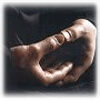Kwan Um School of Zen
Vienna
Vienna
 Zen is very simple… What are you?
Zen is very simple… What are you?
In this whole world everyone searches for happiness outside, but nobody understands their true self inside.
Everybody says, “I” — “I want this, I am like that…” But nobody understands this “I.” Before you were born, where did your I come from? When you die, where will your I go? If you sincerely ask, “What am I?” sooner or later you will run into a wall where all thinking is cut off. We call this “Don’t Know.”
Zen is keeping this “Don’t Know” mind always and everywhere.
When walking, standing, sitting,
lying down, speaking, being
silent, moving, being still.
At all times, in all places, without
interruption — what is this?
One mind is infinite kalpas.
Meditation in Zen means keeping don’t-know mind when bowing, chanting and sitting Zen. This is formal Zen practice. And when doing something, just do it. When driving, just drive; when eating, just eat; when working, just work.
Finally, your don’t-know mind will become clear. Then you can see the sky, only blue. You can see the tree, only green. Your mind is like a clear mirror. Red comes, the mirror is red; white comes the mirror is white. A hungry person comes, you can give him food; a thirsty person comes, you can give her something to drink. There is no desire for myself, only for all beings. That mind is already enlightenment, what we call Great Love, Great Compassion, the Great Bodhisattva Way. It’s very simple, not difficult!
So Buddha said that all beings have Buddha-nature (enlightenment nature). But Zen Master Joju said that a dog has no Buddha-nature. Which one is right? Which one is wrong? If you find that, you find the true way.
Zen Master Seung Sahn
Formal Zen Meditation consists of:
We can differentiate between the mind posture (how to keep the mind) and the body posture: Body posture: It’s possible to sit in different positions: lotus, Burmese, Japanese style, using a little bench or in a chair. Keep your eyes half open, looking at the floor at a 45 degree angle keep your back straight keep your hands in meditation mudra with left hand over right and the thumbs lightly touching.
Body posture: It’s possible to sit in different positions: lotus, Burmese, Japanese style, using a little bench or in a chair. Keep your eyes half open, looking at the floor at a 45 degree angle keep your back straight keep your hands in meditation mudra with left hand over right and the thumbs lightly touching.
Mind posture (how to keep the mind): Breathing is important. The breathing should be relaxed, natural and quiet. One could say: the breath should breathe itself, i.e. it should not be consciously controlled. The attention is usually either on a big question (kor. Hwadu) like e.g. “What am I?” or on a repeating Mantra e.g. Kwan Seum Bosal or Om Mani Padme Hum. The Hwadu can be connected with the breathing, and breathing out should be approx. twice as long as the inhalation. However after some time thinking will appear. If this happens, simply return to the meditation-object, without judging or being annoyed of your lack of concentration.
Walking meditation is a short break for our bones, not for our meditation practice. The hands are folded before the waist and the lower arms almost form a straight line. Walk in a row one behind the other with a distance of approx. 1 meter. The “mind posture” (see above) remains unchanged.
There are sitting bows and standing bows as well as full prostrations. According to Buddhist teachings everthins has Buddha nature. The Buddha represents the Buddha inside us and in every other being and in all appearances. If we bow in front of Buddha, it’s as if we bow in front of us and all other beings. The “small I” bows in front of the “big I”. The “mind posture” (see above) remains unchanged.
“Chanting meditation means keeping a not-moving mind and perceiving the sound of your own voice. Perceiving your voice means perceiving your true self or true nature. Then you and the sound are never separate, which means that you and the whole universe are never separate. Thus, to perceive our true nature is to perceive universal substance. With regular chanting, our sense of being centered gets stronger and stronger. When we are strongly centered, we can control our feelings, and thus our condition and situation. In our Zen centers, people live together and practice together. At first, people come with strong opinions, strong likes and dislikes. For many people, chanting meditation is not easy: much confused thinking, many likes, many dislikes and so on. However, when we do chanting meditation correctly, perceiving the sound of our own voice and the voices all around us, our minds become clear. In clear mind, there is no like or dislike, only the sound of the voice. Ultimately, we learn that chanting meditation is not for our personal pleasure, to give us good feeling, but to make our direction clear. Our direction is to become clear and get enlightened, in order to save all beings from suffering. So when you are chanting, you must perceive the sound of your voice: you and the universe have already become one, suffering disappears, true happiness appears. This is called nirvana. If you keep nirvana, your mind is clear like space. Clear like space means clear like a mirror. Red comes, red. White comes, white. Someone is happy; I am happy. Someone is sad; I am sad. Someone is hungry; give them food. The name for this is great love, great compassion, the great bodhisattva way. That also means great wisdom. This is chanting meditation, chanting Zen.”
Zen-Meister Seung Sahn
Kong-an practice is an ancient form of question and answer. The actual word means “public record”. So these are the public records of past Zen Masters. The answers are rooted in the reality that is beyond time and space, likes and dislikes, but is just-like-this. One of their functions is to give you a Great Question if you don’t have one. Another is to help you eliminate the “hooks” from your mind. Each kong-an has hooks (like mental fishhooks) and when you cannot solve it, it is because your mind has gotten caught on one of the hooks of the kong-an. Sitting with the kong-an as a question is one of the trademarks of Zen practice.
Zen Master Seung Sahn
About Zen Master Seung Sahn
Zen Master Wu Bong
About Zen Master Wu Bong
Zen Master Ji Kwang
About Zen Master Ji Kwang

Der Kompass des Buddhismus
Orientierung auf dem Weg. Theseus (2002) Übersetzung des “Compass of Zen” von Zen Meister Seung Sahn.

Buddha steht kopf
Die Lehre des Zen Meisters Seung Sahn. Context (1990).
Übersetzung des “Dropping Ashes on the Buddha” von Zen Meister Seung Sahn.

The Compass of Zen
The essence of Zen Master Seung Sahn’s teaching: the main points of Buddhism and Zen, the ten gates and temple rules. New edition published by Shambhala.

Bone of Space
Poems by Zen Master Seung Sahn. This collection captures a master’s thoughts during everyday life while traveling, talking on the phone, attending a friend’s funeral.

The Whole World is a Single Flower – 365 Kong-ans for Everyday Life
With questions and commentaries by Zen Master Seung Sahn. The first modern kong-an (koan) collection to appear in many years; it draws on Christian, Taoist and Buddhist sources. Compiled and edited by Zen Master Bon Yeon and Paul Muenzen (Hyon Gak Sunim). 267 pages.

Dropping Ashes on the Buddha – The Teaching of Zen Master Seung Sahn
Compiled and edited by Stephen Mitchell. A delightful, irreverent and often hilarious record of his interactions with Western students. 244 pages.

Only Don’t Know – Teaching Letters of Zen Master Seung Sahn
Issues of work, relationships and suffering are discussed as they relate to meditation practice. New expanded edition published by Shambhala.

Thousand Peaks – Korean Zen: Traditions and Teachers
by Mu Soeng. The spirit of Zen’s golden age survives in Korean Zen. How Buddhism arrived and thrived in Korea. 256 pages.

Open Mouth Already a Mistake
Talks by Zen Master Wu Kwang (Richard Shrobe). Teaching of a Zen Master who is also a husband, father, practicing Gestalt therapist and musician.

A Gathering of Spirit – Women Teaching in American Buddhism
Edited by Ellen Sidor. Talks and discussions from three landmark conferences at Providence Zen Center. Third edition, 1992. 156 pages.